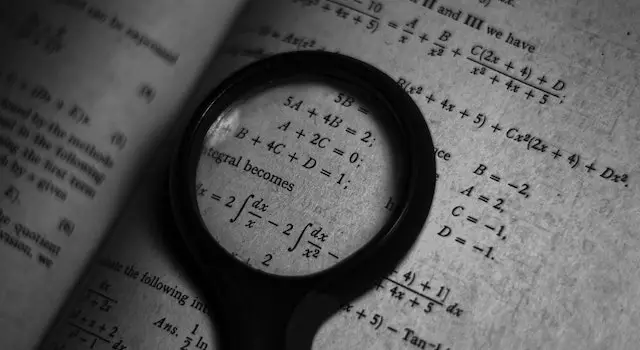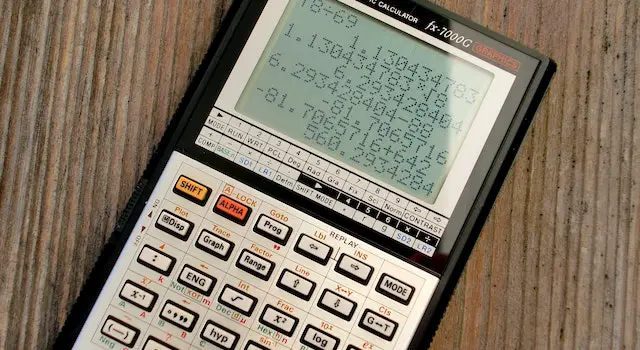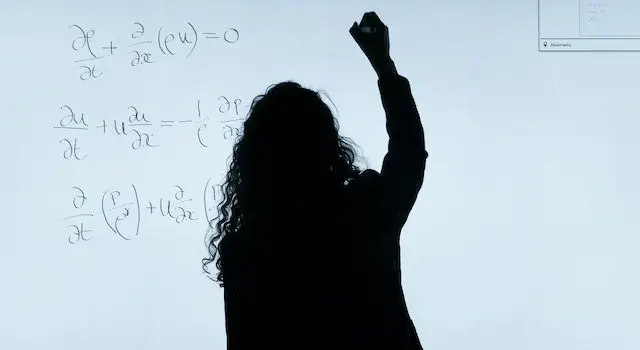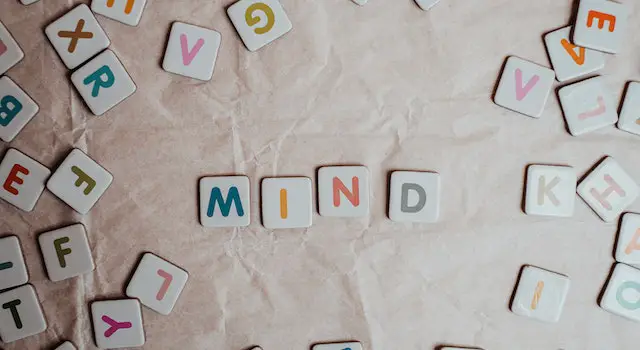How To Read A Mixed Fraction?
Mixed fractions are a type of fraction where a whole number part and a proper fraction part make up the total. For example, knowing how to read is useful because it can be used in various math topics.
Children often use mixed numbers in measurement topics to convert between units of measure, such as liters and hours. Therefore, it can also be important to understand how to add or subtract mixed numbers in addition.
The Numerator

Fractions are numbers with a numerator (top number) and a denominator (bottom number). They can be positive or negative, and they can also have different values. They are a common way to express things in numbers.
Mixed fractions are a special type of fraction where the top number is bigger than or equal to the bottom. They are sometimes called improper fractions, but this doesn’t mean they are bad. Often, these fractions represent more than one whole, such as six-sixths or seven-sixths of something.
These improper fractions can be converted to mixed fractions by dividing the numerator by the denominator. For example, if you divide 17/4, you get 2 & 4 (the quotient) and 1 & 4 (the remainder).
Understanding how to read mixed fractions is important to know what they mean when you see them in math problems. For example, you can use them to explain how many muffins Missy had left over from her bake sale or how long it took her to cook a pizza.
You can also change improper fractions to mixed ones by multiplying the numerator and denominator. This makes the fraction smaller, and it becomes easier to understand.
When you do this, it’s a good idea to write the quotient and the remainder in the same order as they were in the original improper fraction. That’s so you can remember what they mean without thinking too much.
In this way, you can easily understand how to read mixed fractions and solve any math problems that ask you to. If you don’t have a lot of practice, try using a mixed fraction calculator to help you find the answers faster.
These fraction calculators can help you calculate fractions with any number of parts, including improper and mixed fractions. They also work on all fractions and decimals, so you don’t have to go through each of them separately. And they are easy to use, too. Just enter the numbers, and the calculator will show you the result.
The Denominator
A mixed fraction is a number that combines a whole number and a proper fraction. For example, a fraction written as 2(1/7) is considered a mixed fraction.
To read a mixed fraction, you must first divide the numerator (top number) by the denominator (bottom number). Then write down any remainder above the denominator.
You can also multiply the fraction’s denominator by the whole number part to get a result that has a positive or negative sign on it. Then, you can add the result to another improper fraction to create a new mixed number.
This method is called counterclockwise multiplication. It is used often when doing multiplication problems.
In addition, you can use it to help you understand mixed numbers and how to change them into improper fractions. First, you must find a common denominator and adjust the fraction’s numerators accordingly.
One way to consider this is to consider how pizzas are cut into different parts. You can imagine how the slices could be divided into four or three parts, depending on who ate them. But the idea of a whole pizza remains the same.
The fractions of pizzas, cakes, cookies, cupcakes, and other food items can be divided into different parts, but the whole amount will remain the same. So, a fraction of pizzas that are three whole ones equals six halves, and a fraction of pizzas that are four whole ones equals nine halves.
These types of fractions can be very useful when doing math. However, they can be confusing if you’re unsure how to read them properly.
This is why knowing how to read and write mixed fractions is important. It’s not only a good idea to practice these skills, but you may even want to make a practice book of mixed fractions!
You should also practice dividing and subtracting mixed fractions. These skills are important for algebraic and other advanced math. Using this knowledge, you can solve many common problems in mathematics. You can also use these skills to work with other fractions, decimals, and percentages.
The Quotient

A mixed fraction is a combination of a whole number and a fraction. It is sometimes called a mixed number and consists of three parts: a quotient, a divisor, and a remainder.
The quotient of a fraction is the amount that is made up of both the numerator and denominator. For example, 1 3 4 is a mixed fraction, and its quotient is 4. The remainder is 2.
To read the quotient of a fraction, divide the numerator by the denominator (use long division if necessary!) and note down what the quotient and remainder are. If the fraction comprises whole numbers, you will always get an integer quotient and an integer remainder.
Fractions are a great way to represent pieces of a whole in math. They give you information about a small portion of something compared to a larger amount.
Ratios, on the other hand, compare two pieces to each other or a possible whole. Therefore, they therefore, they are more complex and can be used in equations.
Reading ratios is a skill you should be familiar with before learning how to read fractions. If you don’t, you could end up making a costly mistake.
When reading a ratio, you should write the first term of the ratio first and then follow it with the rest of the terms in order. This makes it easier to find the highest common factor across the terms of the ratio and ensures the terms of the ratio are placed correctly.
It’s also a good idea to practice converting improper fractions into mixed numbers. But, again, this is an easy skill to master if you take the time to practice it regularly.
To convert an improper fraction to a mixed fraction, divide the numerator by the numerator of the original fraction and note down the quotient and remainder. The quotient is the new numerator part of the mixed number, and the remainder is the new denominator part. You will also have to change the quotient of the original fraction to its new form. This process can be confusing if you haven’t done it before, so it’s best to solve as many problems as possible. Then, you’ll be able to convert them faster and less likely to make a mistake when reading the quotient of a fraction.
The Remainder
A mixed fraction is a number that combines a whole number and a proper fraction. It is a good way to represent units that cannot be equally divided, such as pizza slices, cookies, and cupcakes.
To read a mixed fraction, first, look at the numbers in the proper fraction part. Suppose you can find out which of the two fraction parts is larger than the other. Then, rewrite the two fractions using a common denominator.
Another way to solve mixed fractions is by rewriting them as improper fractions. This is a much easier method for everyday use. However, math teachers often prefer to teach their students how to write mixed fractions before teaching them how to write improper fractions.
When a mixed fraction has a remainder, the fraction part is bigger than the other part. Therefore, the remainder can be written as a decimal number.
It can also be written as a percentage. This means that the remainder equals a certain percentage of the whole number. For example, a percentage of 5 is 35%.
Once you know how to read the fraction, it is easier to understand what the rest of the number means. The remainder will usually be a decimal number.
You can also use a calculator to convert an improper fraction into a mixed fraction. To do this, divide the numerator by the denominator and write down the result.
Alternatively, you can multiply the whole number part by the fraction’s denominator and then write down the result. You can do this by hand or with a calculator.
Suppose you’re uncomfortable with a calculator. In that case, you can also try to convert a mixed fraction into an improper fraction by writing down the quotient and then a fraction of the remainder/divisor in the numerator and denominator form. This will help you better understand what the remainder is and how it differs from the original improper fraction.
One of the most important things to remember when adding and subtracting fractions is always start with a common denominator. If you have a lot of fractions and don’t have a common denominator, adding or subtracting them can be difficult. For this reason, it is helpful to practice using a calculator before solving a problem.
How To Read Mixed Fractions? Some Guide

Mixed fractions, also known as mixed numbers, combine a whole number and a fraction. They can be confusing to read and understand, but with a few simple steps, you can learn how to read them easily.
Step 1: Understand The Components Of A Mixed Fraction
A mixed fraction has three parts:
- The whole number
- The numerator (the top number of the fraction)
- The denominator (the bottom number of the fraction)
For example, in the mixed fraction 2 1/4, the whole number is 2, the numerator is 1, and the denominator is 4.
Step 2: Read The Whole Number
The whole number is the number before the fraction. In the example above, the whole number is 2. Read this number as you normally would, for example, “two”.
Step 3: Read The Fraction
To read the fraction, say the numerator and then the denominator. In the example above, the fraction is 1/4. Say “one-fourth.”
Step 4: Combine The Whole Number And The Fraction
To read the entire mixed fraction, combine the whole number and the fraction. In the example above, the mixed fraction is 2 1/4. Say “two and one-fourth” or “two and a quarter.”
Step 5: Simplify The Fraction (Optional)
Sometimes, the fraction in a mixed number can be simplified. To do this, divide the numerator by the denominator and write the quotient as the whole number and the remainder as the numerator of the new fraction. For example, in the mixed fraction 5 2/6, the numerator two and denominator six can be simplified by dividing both by 2. The result is 1/3, so the simplified mixed fraction is 5 1/3.
In summary, to read a mixed fraction, you need to understand its components, read the whole number, read the fraction, and combine them. It’s a simple process that can be made even easier by simplifying the fraction if possible. With a little practice, you’ll be able to read mixed fractions with ease.
FAQ’s
What is a mixed number in fractions?
A mixed number is what? A mixed number is one that includes both a proper fraction and a full number.
What is a mixed fraction for kids?
A mixed number combines an integer (whole number) with a fraction. It is also sometimes referred to as a mixed fraction (part of a whole number).
What is a mixed number example?
Mixed numbers can be written either way, for example, 5 and 3/4 or 534. The mixed number’s fractional component needs to be a legal fraction (less than one whole). In a correct fraction, such as 37 or 1115, the numerator (top number) is smaller than the denominator.
What are the 3 types of fraction?
There are three main categories of fractions in mathematics. Proper fractions, incorrect fractions, and mixed fractions are these three types. The expressions with a numerator and a denominator are called fractions.
What is mixed and improper fraction?
Incorrect fractions and mixed numbers have the same value but are written differently. Whole numbers are displayed separately from fractions in mixed numbers. The numerator is larger than the denominator and complete numbers are not displayed separately in improper fractions.


















